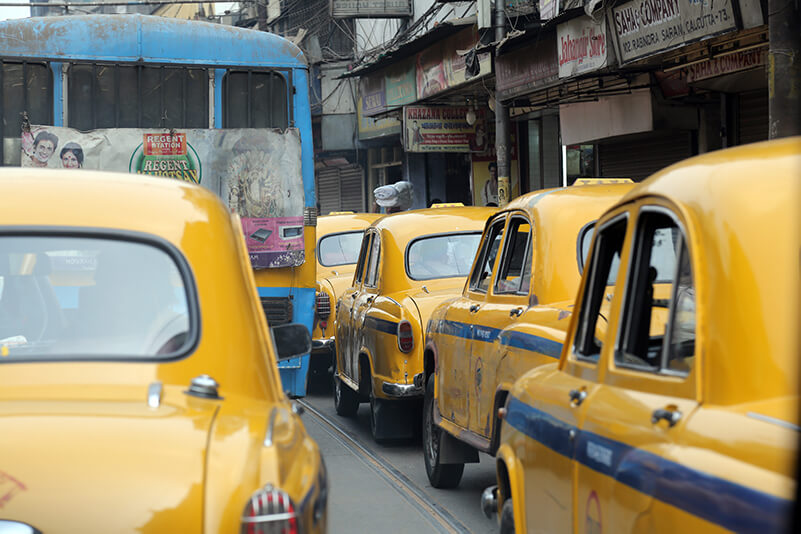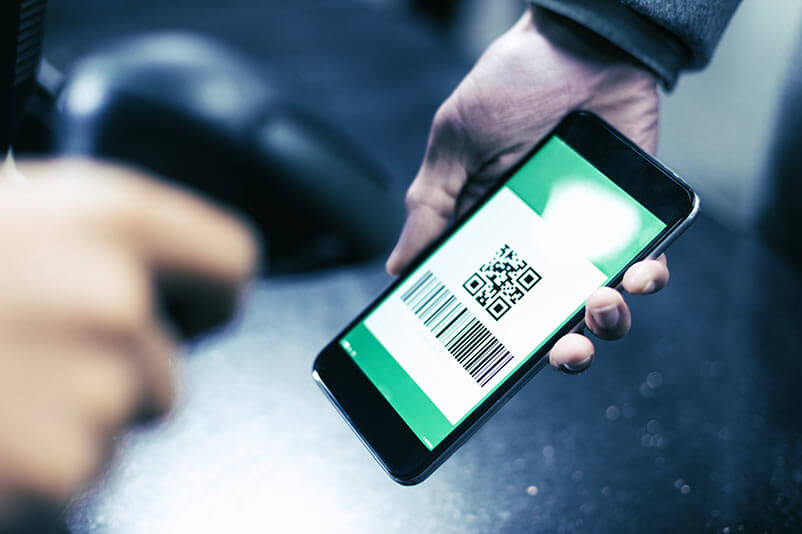Revolutionizing Taxi Payments in Sikkim with QR Codes: A Comprehensive Guide
QR code payments are quickly becoming the standard for taxi payments in Sikkim, India. To simplify the payment process, reduce change-related issues, and minimize payment disputes, the Sikkim government has decided to implement a QR code payment system across the state. This article will provide an in-depth look at the basics of QR code payments, the reasons behind India's choice of this payment method, the specifics of Sikkim's QR code payment implementation, and how to use QR code payments in taxis. Additionally, we will share some success stories to highlight the global application and advantages of QR code payments. Through this article, readers will gain a comprehensive understanding of the current state of QR code payments in Sikkim and their impact on the local transportation payment system.
What is QR Code Payment?

QR code payment is a modern payment method that uses mobile devices to scan QR codes for transactions. A QR code is a type of matrix barcode that stores a large amount of information through the arrangement of black and white squares. In payment scenarios, QR codes typically embed the merchant’s payment information. When a user scans the QR code with a mobile payment application, the app reads and interprets the information, generates a payment request, and completes the payment process upon user confirmation.
This payment method initially gained rapid popularity in Asia, especially in China and Japan. Its convenience and efficiency have led to its global adoption. The operation of QR code payment is straightforward: the merchant generates a QR code containing payment information, the user scans it with a payment app, enters the payment amount, and confirms the payment. The entire process is almost instantaneous, reducing the hassle of cash transactions and enhancing transaction security.
There are two types of QR code payments: static and dynamic. Static QR codes remain unchanged, and users manually enter the transaction amount, suitable for small businesses and individual vendors. Dynamic QR codes generate a new code for each transaction, containing specific transaction amounts and order information, offering higher security and suitability for large businesses and high-frequency transaction scenarios. Dynamic QR codes prevent the risk of duplicate payments and ensure the uniqueness and security of each transaction.
In India, the adoption of QR code payments is also advancing rapidly. As a modern payment method, QR code payment enhances transaction transparency and security, providing users with a more convenient payment experience. In Sikkim, the government’s push for QR code payment has resolved payment disputes between taxi drivers and passengers over change. This measure not only simplifies the payment process but also improves the overall efficiency of the payment system.
Why Did India Choose QR Code Payments?
The rapid spread of QR code payments in India is not just a natural result of technological advancement but a culmination of multiple factors.

India’s payment system has long been dominated by cash transactions. Although cash payments are convenient in some cases, they also bring numerous issues. Problems like difficulty in making change, counterfeit currency, and high cash handling costs are common in traditional payment methods. These issues not only increase transaction costs for merchants and consumers but also pose significant security risks. The emergence of QR code payments provides a simple and efficient solution to these problems. With QR code payments, users can complete transactions by simply scanning a code with their smartphones, avoiding change and counterfeit issues and reducing cash usage, thereby enhancing transaction security.
In its digitalization efforts, the Indian government has been actively promoting the “Digital India” initiative, a national strategy aimed at enhancing economic and social development through widespread information technology use. QR code payments, as an integral part of digital payments, have received substantial government support. The government not only promotes QR code payments through legislation and policy guidance but also introduces various incentives to encourage merchants and consumers to adopt this new payment method. For example, the government has partnered with multiple payment platforms to launch numerous promotional activities and cash rewards to attract users to QR code payments. These measures have significantly accelerated the adoption of QR code payments nationwide.
India’s large population and rapidly growing mobile internet user base provide a solid foundation for the widespread use of QR code payments. Statistics show that India has over a billion mobile users, and mobile internet penetration is rising annually. Payment applications like Paytm, Google Pay, and PhonePe hold significant positions in the Indian market. The proliferation of mobile internet not only allows more people to easily access and use QR code payments but also enhances user payment experience and convenience. For many small and medium-sized businesses and individual entrepreneurs, QR code payments offer a low-cost, easy-to-operate payment solution, significantly lowering the barrier to entering the digital payment field.
In Sikkim, payment disputes and difficulties in making change between taxi drivers and passengers are common, as in other regions. QR code payments effectively solve these issues by providing a cashless, electronic payment method. The Sikkim government’s decision to promote QR code payments aims to enhance the quality and efficiency of taxi services and reduce disputes caused by payment issues. This initiative has been well-received by both drivers and passengers and offers a successful example for other regions, demonstrating the significant potential of QR code payments in improving payment transparency and convenience.
Implementation Details in Sikkim
To promote QR code payments in Sikkim, the government has undertaken a series of detailed and planned measures to ensure the smooth implementation and widespread acceptance of this payment method.
Firstly, the Sikkim government has conducted extensive training for taxi drivers. Over 90% of taxi drivers have attended government-organized QR code payment training courses. These courses not only teach drivers how to use payment applications to generate and scan QR codes but also cover potential technical issues that may arise during the payment process. For instance, in one training session, drivers learned how to generate payment QR codes using Paytm and Google Pay and how to confirm transaction records after payment. These training courses have equipped drivers with the necessary skills and increased their acceptance of the new payment method.
To raise public awareness of QR code payments, the government launched a large-scale publicity campaign. During a three-month publicity period, the government promoted QR code payments through television, radio, social media, and roadside billboards. Statistics show that the publicity campaign reached over 80% of Sikkim’s residents. The government created a series of easy-to-understand operation guides and videos in these publicity materials, demonstrating how to use QR code payments in taxis. For example, a video broadcasted on local TV detailed how passengers could use their phones to scan the QR code provided by the driver to complete the payment, receiving widespread praise.
The establishment of technical support and feedback mechanisms is crucial to the successful promotion of QR code payments. The government has set up dedicated hotlines and online support platforms to ensure that drivers and passengers can receive timely assistance when encountering technical issues. Data shows that in the first two months of QR code payment implementation, the hotline received over 5,000 inquiries, and the online support platform received numerous technical assistance requests. These figures indicate that the technical support mechanisms played a vital role in the initial promotion, helping users resolve many practical problems.
To ensure the security of the QR code payment system, the Sikkim government has collaborated with multiple payment platforms, adopting advanced encryption technologies and security measures. According to relevant data, all transaction data is transmitted using 256-bit encryption technology, significantly reducing the risk of information leakage and payment fraud. Additionally, the government requires all taxis to be equipped with compliant QR code payment devices and undergo regular inspections and maintenance to ensure the devices are always in good condition. Statistics show that over 95% of taxis have installed compliant QR code payment devices.
In the initial implementation phase, the Sikkim government introduced a series of incentives to encourage drivers and passengers to use QR code payments. For example, first-time QR code payment users receive up to 10% discounts or cash-back rewards, and drivers who excel in promoting QR code payments receive cash rewards and recognition. These incentives significantly increased the usage rate of QR code payments, with passenger usage rates exceeding 60%.
Through extensive training and publicity, establishing technical support and feedback mechanisms, ensuring system security, and introducing incentives, the Sikkim government has successfully promoted QR code payments in the taxi industry. These measures not only address many issues associated with traditional payment methods but also provide valuable experience and insights for other regions. This innovative payment method has made taxi services in Sikkim more efficient, convenient, and secure.
How to Use QR Code Payments in Taxis?
The promotion of QR code payments in Sikkim has enhanced payment convenience and modernized taxi services. Below are the specific steps and considerations for passengers and drivers using QR code payments in taxis.
Passenger Instructions
Choose a Payment App:
First, passengers need to install a QR code payment-supported application, such as Paytm, Google Pay, or PhonePe, on their smartphones. These apps are available for free download in major app stores.
Generate a Payment QR Code:
Open the payment app and select the “Scan to Pay” function. The app will automatically activate the phone camera, ready to scan the driver’s QR code.
Scan the Driver’s QR Code:
The driver will display a QR code containing payment information, typically placed on the dashboard or backseat of the taxi. Passengers need to aim their phone camera at the QR code, and the app will automatically recognize and interpret the information.
Enter the Payment Amount:
After successfully scanning, the app will display the payment page. Passengers must enter the fare amount and confirm the payment. Some apps may auto-fill the amount; passengers only need to verify and confirm.
Confirm the Payment:
Once the payment is completed, the app will generate a payment success confirmation page. Passengers can show this page to the driver to confirm the payment. Most apps also send a payment success SMS or push notification as a record.
Driver Instructions
Install a Payment App:
Drivers need to install a QR code payment-supported application, such as Paytm for Business or Google Pay for Business, on their smartphones. These apps are designed for merchants and support
generating dynamic QR codes.
Generate a Dynamic QR Code:
Open the payment app and select the “Receive Payment” or “Generate QR Code” function. After entering the fare amount, the app will generate a QR code containing payment information.
Display the QR Code:
Show the generated QR code to the passenger. The QR code can be displayed on the phone screen or printed out and placed in a visible location in the taxi. Ensure the QR code is clear and easily scannable by the passenger.
Confirm the Payment:
After the passenger completes the payment, the driver will receive a payment confirmation in the app. The app will display the payment amount and passenger information, allowing the driver to verify the payment is correct.
Record the Transaction:
Drivers can view all transaction records in the app, facilitating future reconciliation and income management. Most apps also provide daily, weekly, and monthly transaction reports to help drivers understand their earnings.
Considerations
- Ensure Network Connection: QR code payments rely on network connectivity, so both drivers and passengers should ensure their phones have a stable network signal during use.
- Protect Privacy: During transactions, both drivers and passengers should protect personal information and avoid exposing sensitive data in public.
- Regularly Update Apps: Payment apps are updated regularly to improve functionality and security. Drivers and passengers should keep their apps up-to-date for the best experience.
Success Stories
QR code payments have achieved significant success worldwide, demonstrating effectiveness in both developed and developing countries. Here are some real success stories showcasing the positive impact of QR code payments in different regions and industries.

China: Pioneer of QR Code Payments
China is undoubtedly the pioneer of QR code payments. Since 2014, QR code payments have rapidly gained popularity in China, primarily driven by Alipay and WeChat Pay. By 2022, China’s mobile payment transactions reached $47.2 trillion, with QR code payments holding a significant share. In China, almost all retailers, restaurants, supermarkets, and public transport accept QR code payments. Consumers complete payments simply by scanning the merchant’s QR code with their smartphones, greatly facilitating daily life.
Singapore: Enhancing Payment Efficiency
The Singaporean government launched the “Unified Payment QR Code” (SGQR), integrating multiple payment platforms, including NETS, PayNow, and GrabPay. This initiative greatly simplified payment operations for merchants and consumers. By the end of 2022, over 200,000 merchants in Singapore accepted SGQR payments. This unified payment method eliminated the need for merchants to display multiple QR codes for different platforms, and consumers no longer needed to switch between various platforms, improving payment efficiency.
Japan: Convenience Stores and Vending Machines
Japan’s convenience stores and vending machines widely adopt QR code payments, enhancing the consumer experience. For instance, FamilyMart introduced QR code payments in 2017, and over 90% of its stores now support this payment method. Additionally, Japan’s vending machines commonly support QR code payments, allowing consumers to purchase goods by simply scanning a QR code. This innovative payment method greatly facilitated shopping convenience.
Kenya: A Mobile Payment Model
Kenya’s M-Pesa is one of the world’s most successful mobile payment platforms, providing financial services to millions of unbanked individuals through SMS and QR code payments. Since its launch in 2007, M-Pesa’s user base has grown rapidly, exceeding 30 million users. The introduction of QR code payments made transactions more convenient and secure, significantly contributing to Kenya’s economic development and social progress.
References
“Sikkim Taxi Drivers Mandated to Implement QR Code Payments by July 2024,” Devdiscourse, 2024.
Link to article“QR Code Statistics for 2024: Usage, Trends, Forecasts, and More,” QRCodeChimp, 2024.
Link to article
